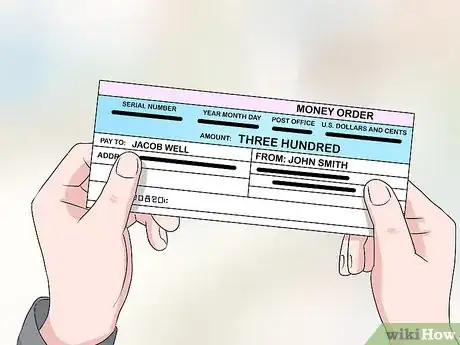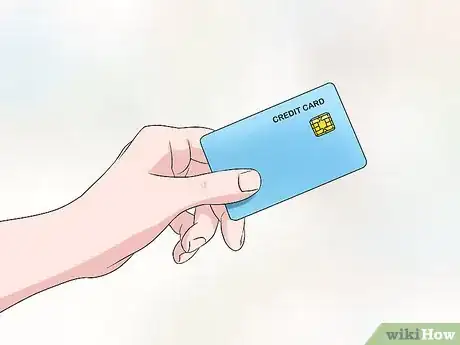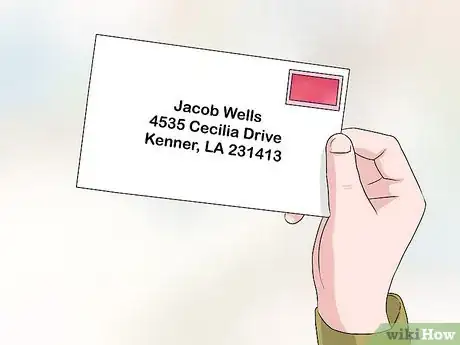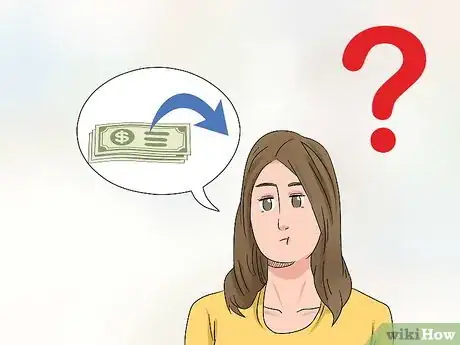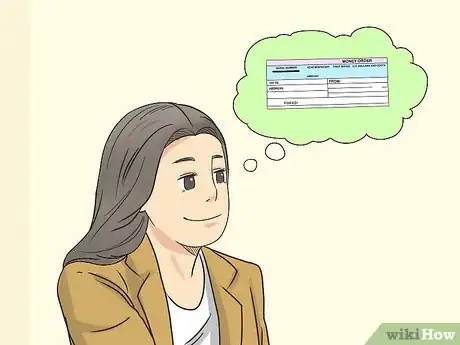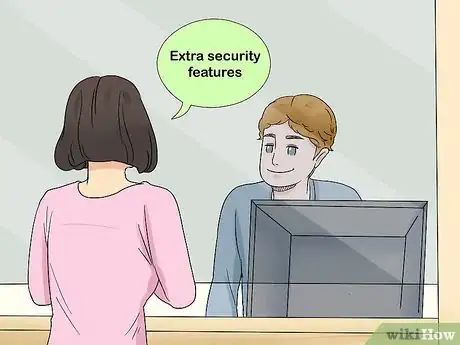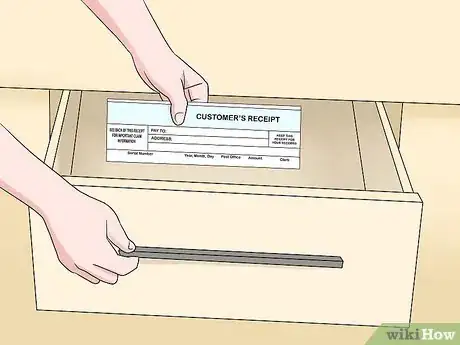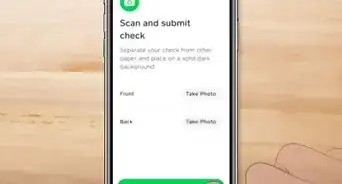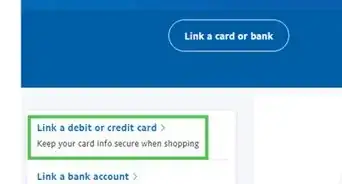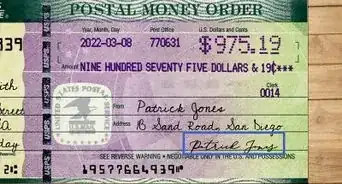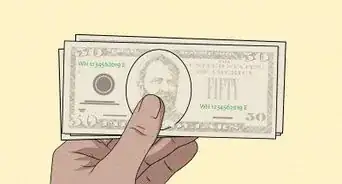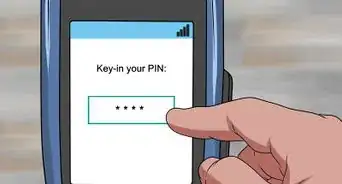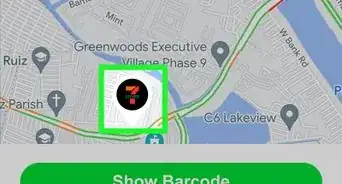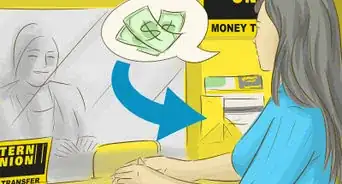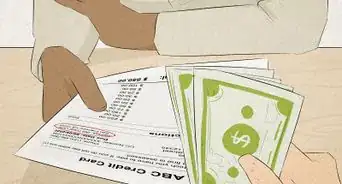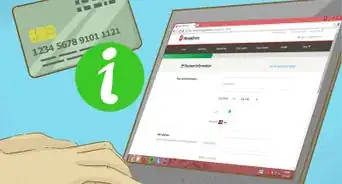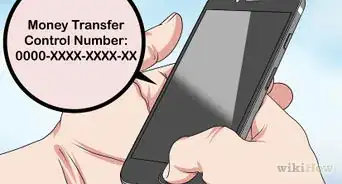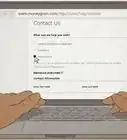This article was co-authored by Gina D'Amore. Gina D'Amore is a Financial Accountant and the Founder of Love's Accounting. With 12 years of experience, Gina specializes in working with smaller companies in every area of accounting, including economics and human resources. She holds a Bachelor's Degree in Economics from Manhattanville College and a Bookkeeping Certificate from MiraCosta College.
There are 7 references cited in this article, which can be found at the bottom of the page.
wikiHow marks an article as reader-approved once it receives enough positive feedback. In this case, several readers have written to tell us that this article was helpful to them, earning it our reader-approved status.
This article has been viewed 550,459 times.
Sometimes you need to send money through the mail to friends, family, or in a business transaction. One of the most secure ways to do this in the United States is to send a money order. A money order is a payment certificate for a specific amount. It may be cashed or deposited much like a check. However, it offers a number of security features that make a money order a much better choice when sending it through the mail. For example, money orders can normally be replaced if they have been lost or stolen. [1] You can also use a money order without having a bank account. Money orders can be conveniently purchased at banks, many retail stores and all post offices. Here's how to go about it:
Steps
Sending International Money Orders
-
1Decide whether to send a money order. There are pro's and con's attached to sending money orders through the mail. Benefits include extra security, no need for a bank account, the chance to make a transaction with a single payment, and the ability to send money overseas. [2] Possible problems in sending a money order include extra fees, extra paperwork, the need to go to a bank or post office instead of going online, dealing with limitations on the amount of money you can send, and occasional delays in sending and receiving money. Consider your options carefully before choosing to send a money order abroad.
- If speed is important, consider wiring money instead of sending a money order. Western Union transfers can be done almost instantly, whereas money orders must physically traverse whatever distance is involved. [3]
- If you have to send more than $700 internationally, you might run into money-order limitations, meaning you would have to purchase more than one money order.
-
2Look up which countries accept international money orders. Not all nations do. At last count only 29 countries accept American money orders. Any nation is free to place specific restrictions and conditions before accepting foreign money orders. Before proceeding any further, check with your post office about which nations will accept your money order and which might require extra paperwork on your part. [4]Advertisement
-
3Visit a post office. Talk with a clerk at the service window. If you don't know where your nearest post office is, use a post office locator online such as the one at https://tools.usps.com/go/POLocatorAction!input.action. All full-service U.S. post offices can issue money orders. [5]
- Other places that sell money orders include credit unions, banks, and certain large retail stores. [6]
-
4Tell the postal clerk you wish to purchase an international money order. In the U.S., they may be purchased for any value up to $700. (Certain countries -- El Salvador and Guatemala, for example -- will not allow money orders larger than $500.) [7] The clerk will furnish you with the appropriate paperwork to fill out.
-
5Pay for the money order. You may use cash, a debit card, or a traveler's check. [8]
- In addition to the face amount of the money order, you will pay a small transaction fee. In the United States an international money order carries a fee of $4.50. This is added to your total when you pay the clerk.
- Note that a traveler's check can be used only if the money order is for at least half of the traveler's check's value. For example, if you have a traveler's check for $500, you can use it to purchase a money order worth at least $250 (or more than one money order totaling at least $250.) [9]
-
6Fill out the money order form. There are a number of lines to fill out on the form, and it is essential that you do so correctly. Be sure that you use only blue or black ink and that you print everything correctly and legibly. Most money-order forms will ask you to enter the following:
- Today's date
- Your full name
- Your full address
- The recipient's name
- The recipient's full address
- The amount of money you are sending
- A description of the purpose for the money
-
7Put your money order in a stamped, addressed envelope. Complete all address information, and affix the proper postage. The appropriate postage depends on the weight of the letter and its destination. A one-ounce international letter requires postage of about $1.15. [10]
-
8Decide which extra security features you want to purchase. When you send money orders you can choose to increase the amount of security and insurance on your envelope. Indemnity coverage is provided free of charge, which means that you can request that a lost or stolen money order be replaced for a nominal fee. If you'd like your money order to have more security, insurance is available, as well as other features including registered mail or restricted delivery. You can ask the postal clerk about the costs and benefits of these extra services. [11]
-
9Put your receipt in a safe place. Make sure that the postal clerk provides you with a receipt for your money order. Place the receipt somewhere safe where you can find it later. For example, a wallet, filing cabinet, or desk drawer might be good places to store your money order receipt.
- If your money order is lost or stolen, your receipt will help you get your refund quickly. There is, however, a fee of $6.10 for money-order replacements. [12]
-
10Track your money order. Use the Postal Service's tracking feature to predict when your money order will arrive at its destination. [13] This feature will allow you to monitor where your money order is at all times, and it will let you know when your money order is expected to arrive at its destination. This will help you ensure that the money has gone to the right place and person.
- If your package goes astray, contact your post office immediately. They will give you the forms to begin the money order replacement process.
Sending Domestic Money Orders
-
1Determine how much money you wish to send. You will not be able to send more than $1,000 in a single domestic money order. If you need to send more than $3,000 worth of money orders in a single day, you will have to fill out an extra form and bring a photo ID that includes your home address and full name. [14]
- If your purchase will exceed $3,000, remember to bring personal identification with you to the post office.
-
2Decide to send a money order. There are pro's and cons to sending money orders through the post office. Benefits to using money orders include extra security, not requiring a bank account, and being able to pay upfront. [15] Potential downsides to sending a money order include extra fees, filling out extra paperwork, needing to visit your local post office in person instead of dealing online, having caps on the amount of money you can send, and potential delays in sending and receiving money. Consider your options carefully before choosing to send a money order.
- If speed is an issue, consider wiring the money instead of sending a money order. Western Union transfers can be done almost instantly, whereas a money order will have to travel physically to its destination. [16] You can also transfer money with Zelle, which is an instant service. Just keep in mind that the government is now sending 1099 forms to people who receive money from money-sharing services (like Zelle, Cash App, and Venmo).
-
3Visit your local post office. Wait in line to visit with a clerk. If you do not know where your nearest post office is, use a post office locator feature online such as this one: https://tools.usps.com/go/POLocatorAction!input.action. online. Most official post offices will be able to issue a money order directly to you.[17]
- If you are in a remote location, you may be able to receive a money order form from your rural carrier. [18] This might be more convenient than traveling to a post office. Discuss this option with your postal carrier in advance so that they can provide you with the proper forms.
- Other places to purchase money orders include credit unions, banks, military facilities, and certain large stores. [19]
-
4Tell the postal clerk that you wish to purchase a domestic money order. Individual money orders are available for values up to $1,000. You cannot exceed $3,000 of money-order purchases in a single day unless you fill out extra forms and show a photo ID. Your postal clerk will be able to provide you with the proper paperwork.
-
5Purchase the money order. There will be a small fee for domestic money orders — usually between $1.00 and $2.00. Pay the fee, plus the amount of the money order. You may pay with a debit card, cash, or traveler's check.
- Note that traveler's checks can be used only if the purchase amount is more than half of the traveler's check amount. For example, if you have a traveler's check for $500, you can use it to purchase money orders that are $250 or more. [20]
- Members of the military who purchase military money orders have a slightly lower fee of 40 cents per money order. [21]
-
6Fill out the money-order form. There are a number of lines to fill out on the form, and it is essential that you do so correctly. Be sure you use blue or black ink and that you print everything correctly and legibly. Most money-order forms will ask you to enter:
- Today's date
- Your full name
- Your full address
- The recipient's name
- The recipient's full address
- The amount of money you are sending
- A memo explaining the purpose of the money
-
7Put your money order in a stamped, addressed envelope. Complete all address information and affix the appropriate postage. The postage depends on the weight of your letter. If the envelope weighs no more than an ounce, it will require a single first-class stamp. [22]
-
8Decide which extra security features you want to purchase. When you send money orders, you can choose to increase the amount of security and insurance on your package. Indemnity coverage is provided free of charge, which means that you can request that a lost or stolen money order be replaced for a nominal fee. If you'd like your money order to have more security, insurance is available, as well as other features like registered mail or restricted delivery. You can ask your postal clerk about the costs and benefits of these extra services. [23]
-
9Put your receipt in a safe place. Make sure that the clerk provides you with a receipt for your money order. Put the receipt in a safe place you'll remember. A wallet, filing cabinet, or desk drawer might be good places to store the receipt.
- If your money order is lost or stolen, your receipt will help you get a refund more quickly. There is, however, a fee of $6.10 for a money order replacement. [24]
-
10Track your money order. Use the Postal Service's tracking feature to predict when the money order will arrive at its destination. [25] This feature will allow you to monitor where your money order is at all times and when it's expected to arrive. This will help you ensure that the money has gone to the right place and person. [Image:Send a Money Order Through the Post Office Step 8 Version 2.jpg|center]]
- If your package goes astray, contact your post office immediately. They will be able to give you the forms to begin the money-order replacement process.
Expert Q&A
Did you know you can get expert answers for this article?
Unlock expert answers by supporting wikiHow
-
QuestionCan you send a money order to yourself?
 Gina D'AmoreGina D'Amore is a Financial Accountant and the Founder of Love's Accounting. With 12 years of experience, Gina specializes in working with smaller companies in every area of accounting, including economics and human resources. She holds a Bachelor's Degree in Economics from Manhattanville College and a Bookkeeping Certificate from MiraCosta College.
Gina D'AmoreGina D'Amore is a Financial Accountant and the Founder of Love's Accounting. With 12 years of experience, Gina specializes in working with smaller companies in every area of accounting, including economics and human resources. She holds a Bachelor's Degree in Economics from Manhattanville College and a Bookkeeping Certificate from MiraCosta College.
Financial Accountant
-
QuestionDoes the sender need to sign the money order?
 Michael R. LewisMichael R. Lewis is a retired corporate executive, entrepreneur, and investment advisor in Texas. He has over 40 years of experience in business and finance, including as a Vice President for Blue Cross Blue Shield of Texas. He has a BBA in Industrial Management from the University of Texas at Austin.
Michael R. LewisMichael R. Lewis is a retired corporate executive, entrepreneur, and investment advisor in Texas. He has over 40 years of experience in business and finance, including as a Vice President for Blue Cross Blue Shield of Texas. He has a BBA in Industrial Management from the University of Texas at Austin.
Business Advisor
-
QuestionFor how long are postal orders valid?
 Michael R. LewisMichael R. Lewis is a retired corporate executive, entrepreneur, and investment advisor in Texas. He has over 40 years of experience in business and finance, including as a Vice President for Blue Cross Blue Shield of Texas. He has a BBA in Industrial Management from the University of Texas at Austin.
Michael R. LewisMichael R. Lewis is a retired corporate executive, entrepreneur, and investment advisor in Texas. He has over 40 years of experience in business and finance, including as a Vice President for Blue Cross Blue Shield of Texas. He has a BBA in Industrial Management from the University of Texas at Austin.
Business Advisor
Warnings
- A money order is a very secure way to send money. However, money orders can get lost or stolen. Be prepared to go through the money-order replacement process if necessary. You should be able to get your money back, but there might be a delay of at least 30 days.⧼thumbs_response⧽
- Be aware of the possibility of fraudulent money orders. American money orders have watermarks of Benjamin Franklin on the paper to indicate that they are legitimate. [26]⧼thumbs_response⧽
- Notice any eraser marks, smudging, or discoloration. These are indications that a money order has been tampered with. [27]⧼thumbs_response⧽
Expert Interview
Thanks for reading our article! If you'd like to learn more about money orders, check out our in-depth interview with Gina D'Amore.
References
- ↑ https://www.usps.com/shop/money-orders.htm
- ↑ http://www.nerdwallet.com/blog/banking/money-orders/
- ↑ http://www.anpost.ie/AnPost/MainContent/Personal+Customers/Money+Matters/Money+Transfer/
- ↑ http://pe.usps.com/text/imm/immc3_018.htm
- ↑ https://www.usps.com/shop/money-orders.htm
- ↑ http://www.nerdwallet.com/blog/banking/money-orders/
- ↑ https://www.usps.com/international/money-transfers.htm
- ↑ https://www.usps.com/shop/money-orders.htm
- ↑ http://pe.usps.com/text/dmm300/503.htm#1238627
- ↑ http://www.stamps.com/usps/current-postage-rates/
- ↑ http://pe.usps.com/text/dmm300/503.htm#1238627
- ↑ https://www.usps.com/shop/money-orders.htm
- ↑ http://www.nerdwallet.com/blog/banking/money-orders/
- ↑ http://pe.usps.com/text/dmm300/503.htm#1238627
- ↑ http://www.nerdwallet.com/blog/banking/money-orders/
- ↑ http://www.anpost.ie/AnPost/MainContent/Personal+Customers/Money+Matters/Money+Transfer/
- ↑ https://www.usps.com/shop/money-orders.htm
- ↑ http://pe.usps.com/text/dmm300/503.htm#1238627
- ↑ http://www.nerdwallet.com/blog/banking/money-orders/
- ↑ http://pe.usps.com/text/dmm300/503.htm#1238627
- ↑ https://www.usps.com/shop/money-orders.htm
- ↑ http://www.stamps.com/usps/current-postage-rates/
- ↑ http://pe.usps.com/text/dmm300/503.htm#1238627
- ↑ https://www.usps.com/shop/money-orders.htm
- ↑ http://www.nerdwallet.com/blog/banking/money-orders/
- ↑ https://www.usps.com/shop/money-orders.htm
- ↑ https://www.usps.com/shop/money-orders.htm
About This Article
To send an international money order through the post office, visit a post office or credit union and explain to the clerk that you want to purchase a money order. Pay for the money order and the transaction fee with cash or a debit card, then fill out the paperwork given to you by the clerk. When completing the form, remember to include details for you and the recipient. Finally, put your money order in a stamped envelope, give it to the clerk, and put your receipt in a safe place in case you need it later. To learn how you can follow the progress of your money order using a tracking service, read on!
